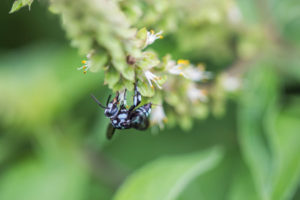Honey Bees Are Not The Best Insect Pollinators
During the past ten to fifteen years, entomologists and other scientists all over the world have been discussing the issue of declining bee populations around the world. Obviously, the declining bee population is alarming due to the fact that bees are earth’s primary pollinators. Much of the time, news stories on this topic mention dwindling honey bee populations while ignoring all other bee species. You may be thinking that honey bees are addressed more often than other bee species because honey bees are the most important pollinators. However, this is not necessarily the case, as a recent study has demonstrated that only one third of crop plants in the United Kingdom are pollinated by honey bees, and even fewer honey bees pollinate wild plant life in the country. Bumblebees pollinate far more plants than honey bees, and new research is showing that honey bees can even contribute to the current global bee population crisis.
In addition to honey bees, insects like flies, butterflies and other bee species also pollinate plants. Naturally, some insects pollinate plants more rapidly than other insects. There are many factors that determine how effectively certain insect species will pollinate plants. Insects that are big and hairy, like bumblebees, end up pollinating the highest amount of plants since pollen easily becomes stuck within their hairs. This pollen eventually dislodges from the bumblebees body and winds up falling on a flower, successfully pollinating the flower. Honey bees can even spread exotic plants and pathogens that often kill other pollinating insects. In this case, honey bees contribute to the global drop in pollinating bee species.
Do you think that the population decline affecting bee species could be caused by a disease that only affects bees?





